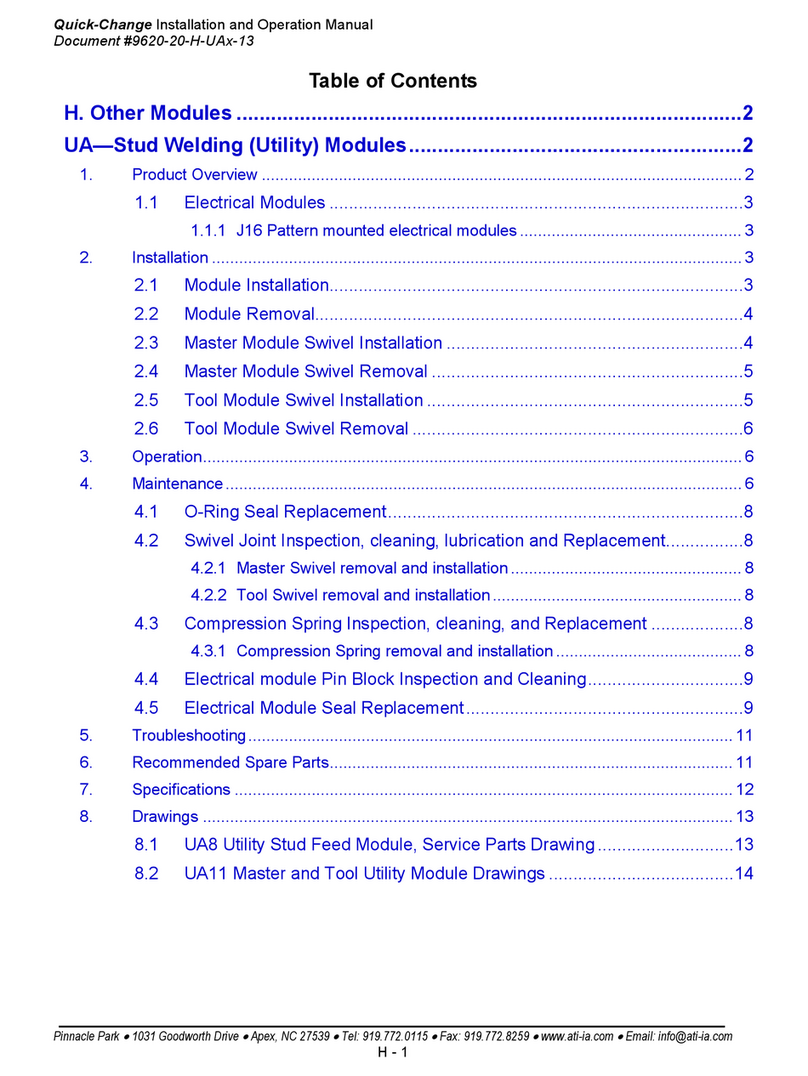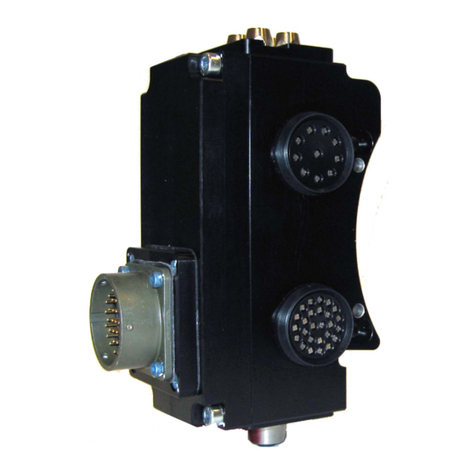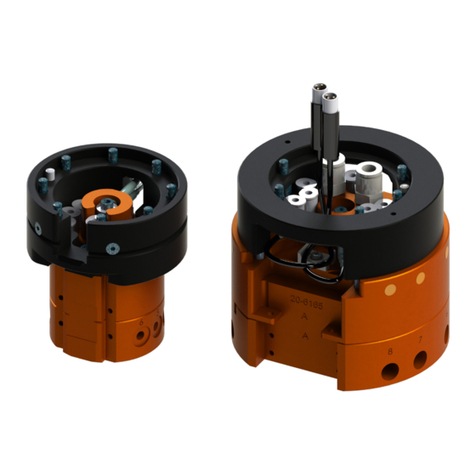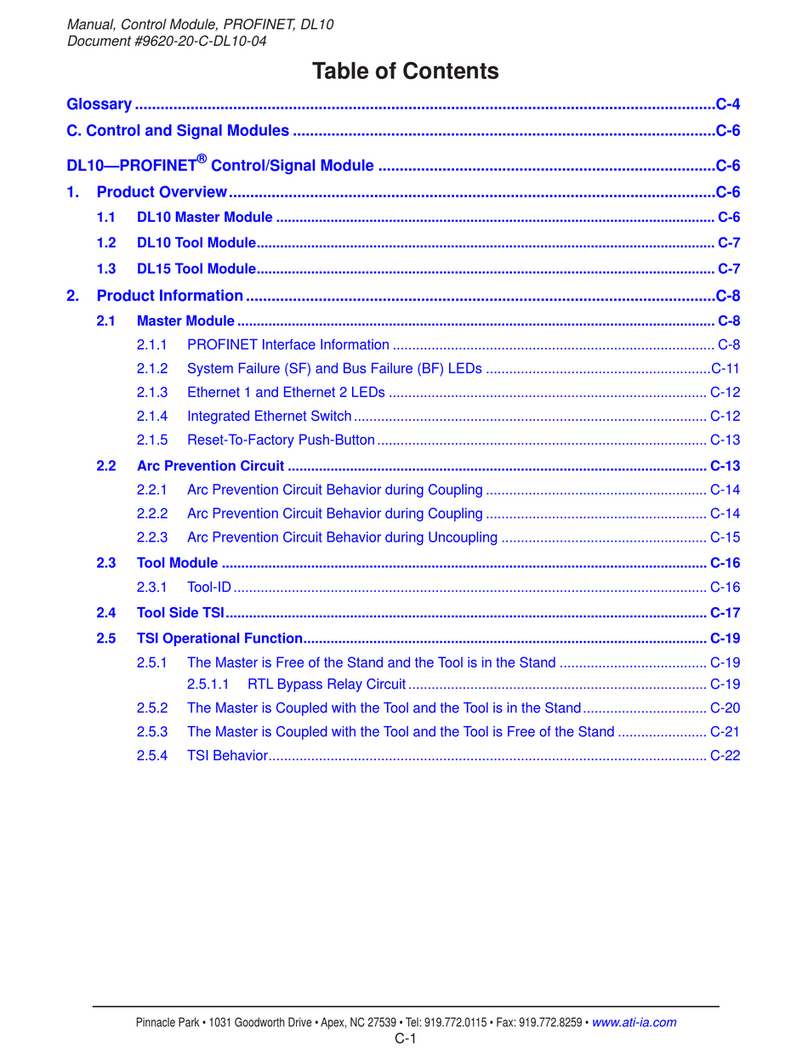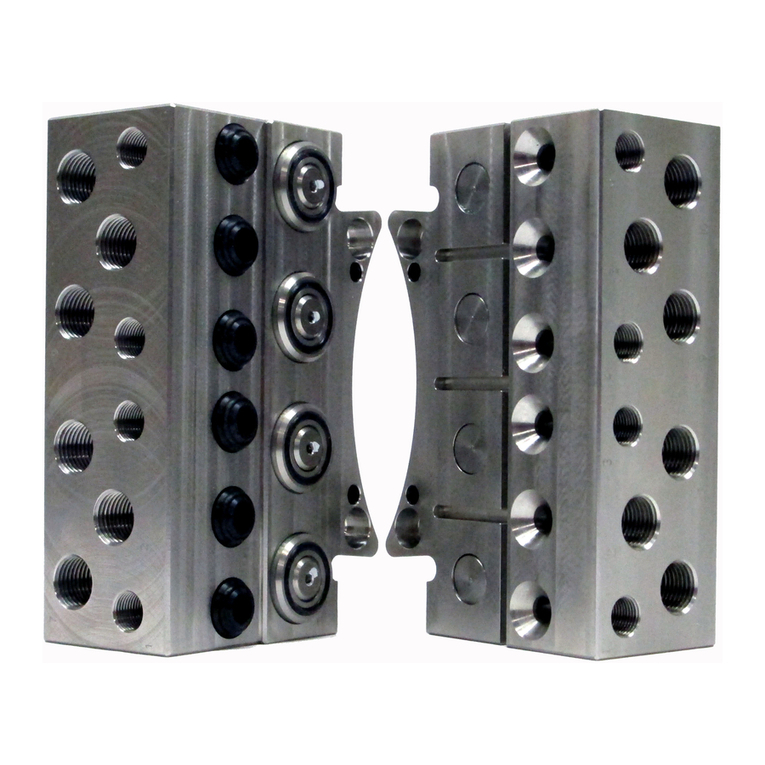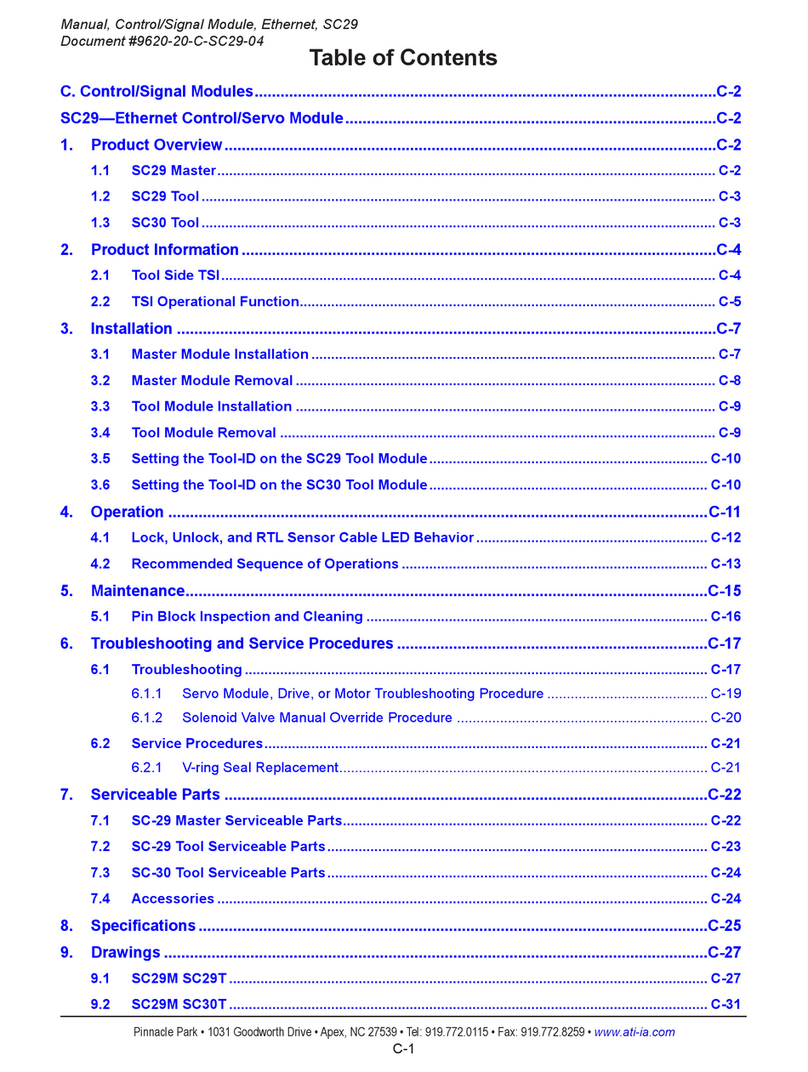
Manual, Electrical Module, X7GL
Document #9620-20-E-X7GL-02
Pinnacle Park • 1031 Goodworth Drive •Apex, NC 27539 • Tel: 919.772.0115 • Fax: 919.772.8259 • www.ati-ia.com
E-5
4. Maintenance
Under normal conditions, no special maintenance is necessary; however, it is recommended that periodic
inspections be performed to assure long‑lasting performance and that unexpected damage has not occurred. The
modules are not designed to be eld serviced as all point‑to‑point wiring connections are soldered.
DANGER: This module has a voltage of 50V or greater; always remove power before
contacting the module. Arcing and damage occur if power is not removed from the module
during maintenance or service. Always remove power before attaching or disconnecting
cables, separating or inserting the mating couplers, or making any contact with the Tool
Changer or Utility Coupler.
WARNING: Do not perform maintenance or repair(s) on the Tool Changer or modules unless
the Tool is safely supported or placed in the tool stand, all energized circuits (e.g. electrical,
air, water, etc.) are turned o, pressurized connections are purged and power is discharged
from circuits in accordance with the customer specic safety practices and policies. Injury
or equipment damage can occur with the Tool not placed and energized circuits on. Place
the Tool in the tool stand, turn o and discharge all energized circuits, purge all pressurized
connections, and verify all circuits are de-energized before performing maintenance or
repair(s) on the Tool Changer or modules.
If the Tool Changer is used in dirty environments (e.g., welding or deburring applications), limit the exposure of the
Tool Changer. Idle Tool assemblies should be covered to prevent debris from settling on the mating surface.Also,
the Master assembly should be exposed for only a short period of time during Tool change and down time. Perform
the following visual inspections monthly:
• Inspect mounting fasteners to verify they are tight. If loose, then tighten to the proper torque.
Refer to Section 2—Installation.
• Cable connections should be inspected during maintenance periods to ensure they are secure. Loose
connections should be cleaned and re‑tightened, as appropriate. Inspect cable sheathing for damage and repair
or replace damaged cabling. Loose connections or damaged cabling should not occur during normal operation
and may indicate improper routing and/or strain relieving.
• Inspect the Master and Tool pin blocks for pin damage, debris or darkened pins. Refer to Section 4.1—
Cleaning Procedure.
• Inspect V‑ring seals for wear, abrasions, and cuts. If worn or damaged, replace. Refer to Section 5.2.1—
Seal Replacement.
